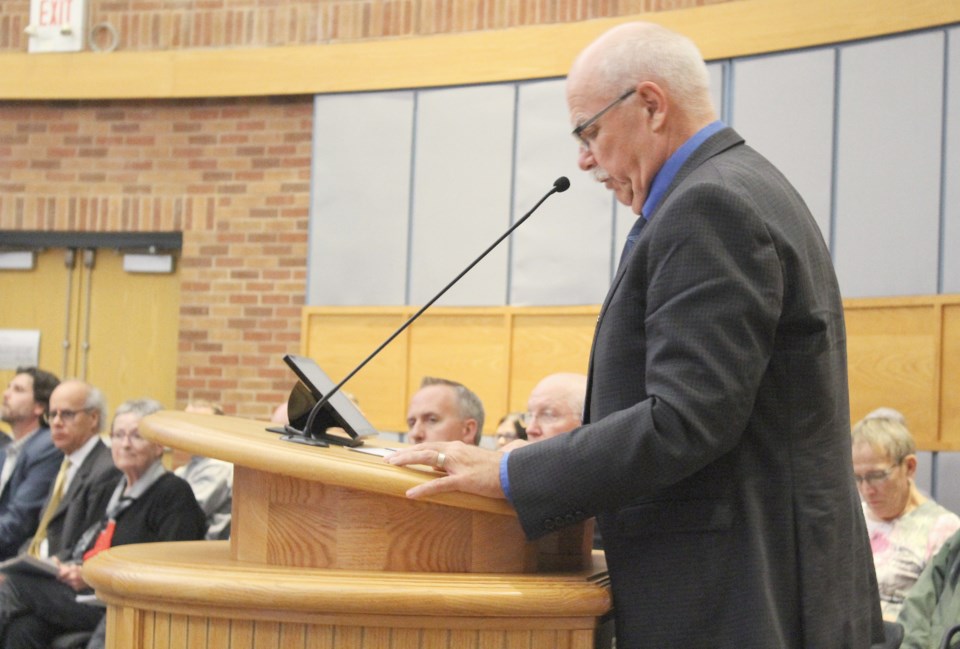The latest point of contention with education development charges is geography.
One thing seems certain: Education development charges in Simcoe County will increase. Yet to be decided is whether the charges will be applied equally across the county or vary depending on an area’s projected growth.
The initial recommendation in the spring was to have everyone pay the same charges – which apply to new development and are used to purchase sites for new schools – but the Simcoe County District School Board and the Simcoe Muskoka Catholic District School Board deferred a decision and asked their consultant to look into area-specific charges instead.
That information was presented during a meeting Monday night.
If the board opts for a county-wide approach, development charges for new residential units will increase from $1,759 to $5,064. The fee for non-residential development, per square foot of gross floor area, would increase from 47 cents to $1.37.
To determine area-specific charges, Watson and Associates split the county into north and south regions. For residential development, the north region would see charges of $2,040 per unit, while developers in the south would pay $6,370. Those figures for non-residential development would be 61 cents in the north region and $1.67 in the south.
Two mayors who want to see area-specific charges have now raised concerns about being lumped into the south region.
“Springwater and Oro-Medonte would make sense to be in the north if they’re going to area-specific charges,” Springwater Mayor Bill French said, noting Barrie and points south are seeing the most development.
Springwater has some pricey real estate, he said, but added it’s still not as expensive as comparable homes in the south end.
The county is too large to be split into two regions for the purpose of development charges, French said.
“The board is too big and the economic disparity between north and south is so big,” he said. “Maybe there should be a board servicing the south end of the county and another board servicing the north.”
Oro-Medonte Mayor Harry Hughes feels his township, too, is out of place in the south region.
“It seems peculiar that they would do it on the basis of regions rather than economic boundaries,” he said. “We’re being included in the south, where there is a lot of growth, and that only applies to half of our township.”
The only other two representatives from north Simcoe County municipalities to address the boards Monday expressed their support for the area-specific charges. Scott Warnock, mayor of Tay Township, said it would be “a far more accurate and equitable approach.”
Jeff Lees, chief administrative officer with the Town of Penetanguishene, agreed.
“The area-specific charge accurately reflects growth projections,” he said. “A one-size-fits-all is not appropriate.”
Along with Oro-Medonte and Springwater in the proposed south region are Adjala-Tosorontio, Barrie, Bradford West Gwillimbury, Essa, Innisfil and New Tecumseth. In the north region, in addition to Penetanguishene and Tay, are Clearview, Collingwood, Midland, Orillia, Ramara, Severn, Tiny and Wasaga Beach.
Trustee Robert North isn’t yet sold on the proposed boundaries.
“The easiest approach is a north-south split, but I don’t think it’s the most equitable way,” said North, the public board’s representative for Penetanguishene, Tiny and Wasaga Beach.
Brandy Rafeek, the public board’s trustee for Adjala-Tosorontio, Essa and CFB Borden, had similar concerns.
“There isn’t a whole lot of growth anywhere in (Adjala-Tosorontio),” she said.
It’s all part of the “imperfect” education development charges bylaw that is bound to leave someone, somewhere, unhappy, said Jodi Lloyd, the public board’s vice-chair, and trustee for Orillia and Ramara.
She isn’t concerned only about how the development charges will be implemented, but also when they will come into effect.
The new bylaw cannot be voted on until the province approves the school boards’ education development charges background study, which was a mandatory part of the process.
Before the provincial election in June, Watson and Associates was told there likely wouldn’t have been any delays, even if a new government was voted in. However, when the Progressive Conservatives defeated the ruling Liberals, “they wanted to get the new cabinet installed” and brief the new education minister, Ammendolia said.
The background study has still not been approved by the province.
A couple of school boards had their education development charges bylaws expire, but the Ministry of Education has granted them a one-year extension on those existing bylaws.
That’s cold comfort to Lloyd, who said the extra revenue from the new charges is needed.
“What if we don’t get approval? That’s going to be a significant shortfall,” she said.
The boards will meet again Oct. 25, when it is expected they will vote on the bylaw – if the province has approved the background study by then. In the meantime, Lloyd would like those in the south end of the county to break their silence on the issue.
“My concern is we still haven’t heard from municipalities in the south at any of these meetings,” she said. “I hope we do, because it will have a significant impact on them.”
The Oct. 25 meeting will take place at 6 p.m. at the Simcoe Muskoka Catholic District School Board offices on Alliance Boulevard in Barrie.



